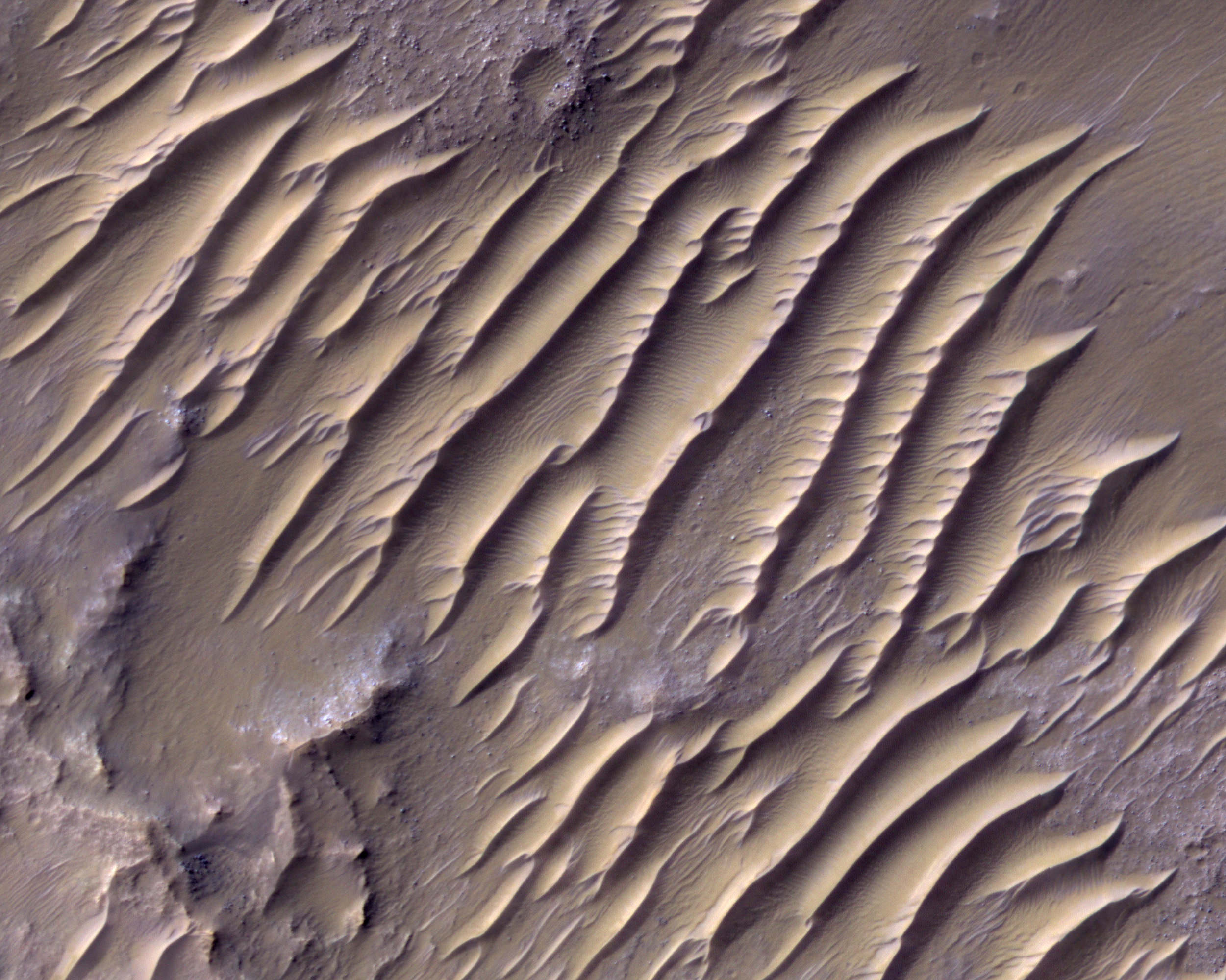Wavy dunes and straight dunes

The crazy laciness of martian TARs
September 25, 2017
Just do it
October 23, 2017
A Piece of Mars: The dunes here are ~40 m (131 ft) apart and ~200 m (219 yd) long. (They’re not really dunes, but rather a windblown thing nearly unique to Mars that we call TARs.) Look carefully and you’ll see that some have very straight crests, like a sword – this is typical for TARs. But others have wavy crestlines, like huge serrated knives.
Why are some wavy while others are straight? My guess is that the straight-crested TARs formed first. TARs are known for being immobile. The wind forms them, and then they just stop moving, unlike dunes and ripples, which can migrate long distances. At some point after they formed, the wind direction shifted, maybe as the climate in this region changed. The TARs had become somewhat resistant to erosion by that point. They weren’t as hard as rocks, but they’d probably developed a crust that made it hard for this new wind to rework their sediment.
But the wind, like water, is relentless, and it worried away at the TARs. Eventually the crust on some of them gave way, maybe because it was less protected by local topography, or maybe because it just didn’t develop as strongly as those on neighboring TARs, or maybe because the new wind blew more sediment over some TARs and less over others. And so some of the TARs were partly reworked by this new wind, forming tiny little new TARs on the left sides of the older TARs, which led to the wavy crestlines. So today we see the history of two different winds, recorded in the waviness of TAR crestlines. (HiRISE ESP_051995_1525, NASA/JPL/Univ. of Arizona)



